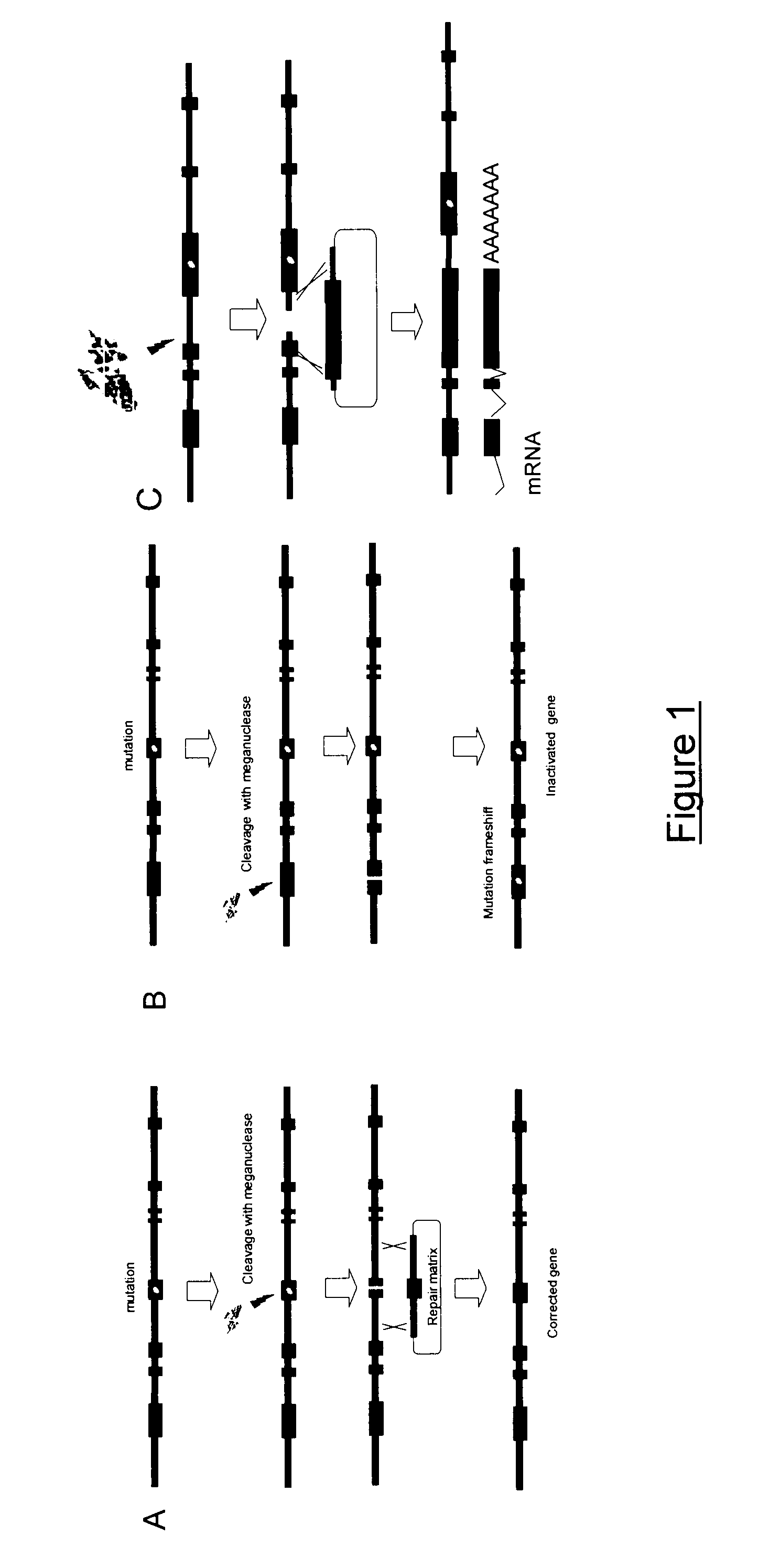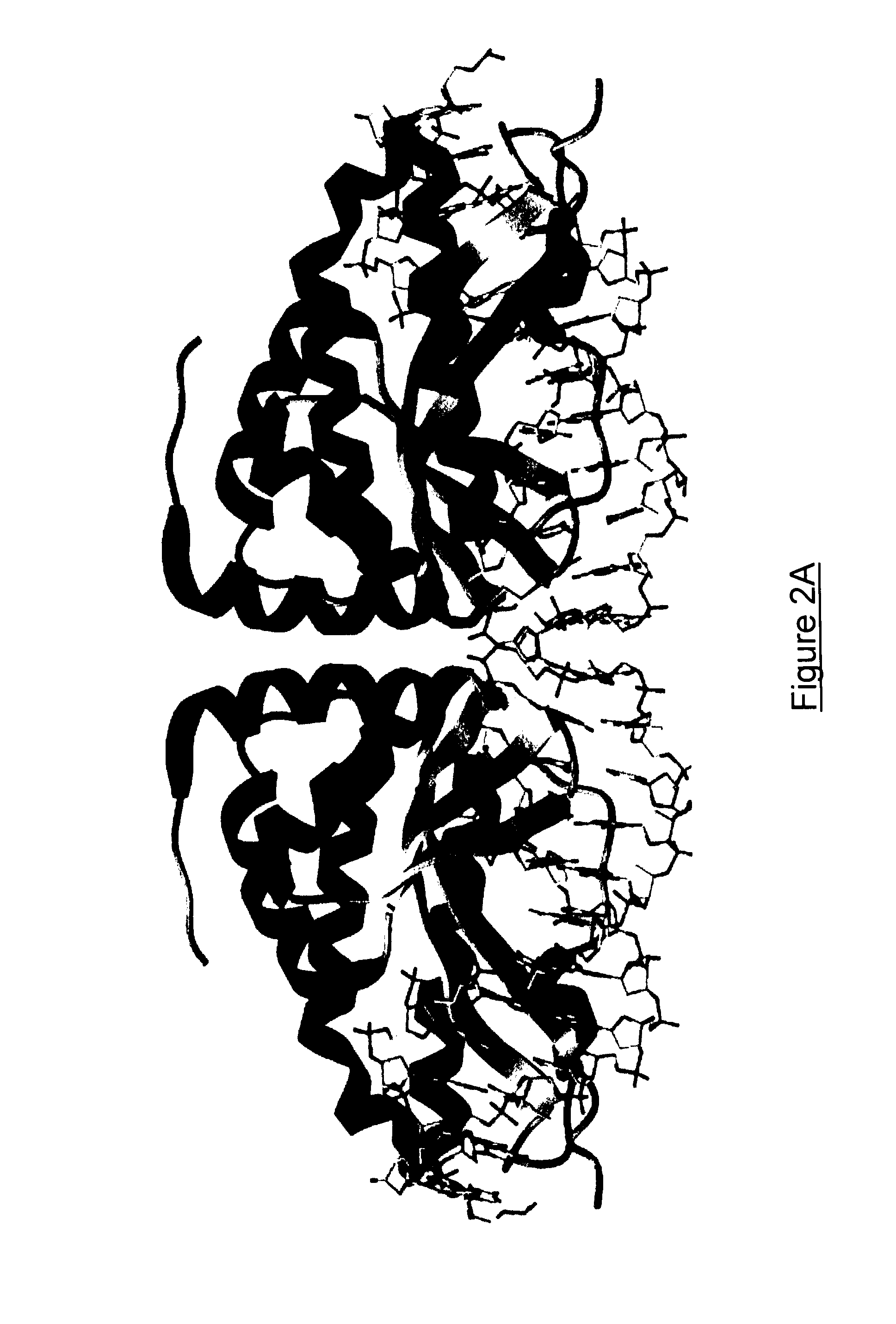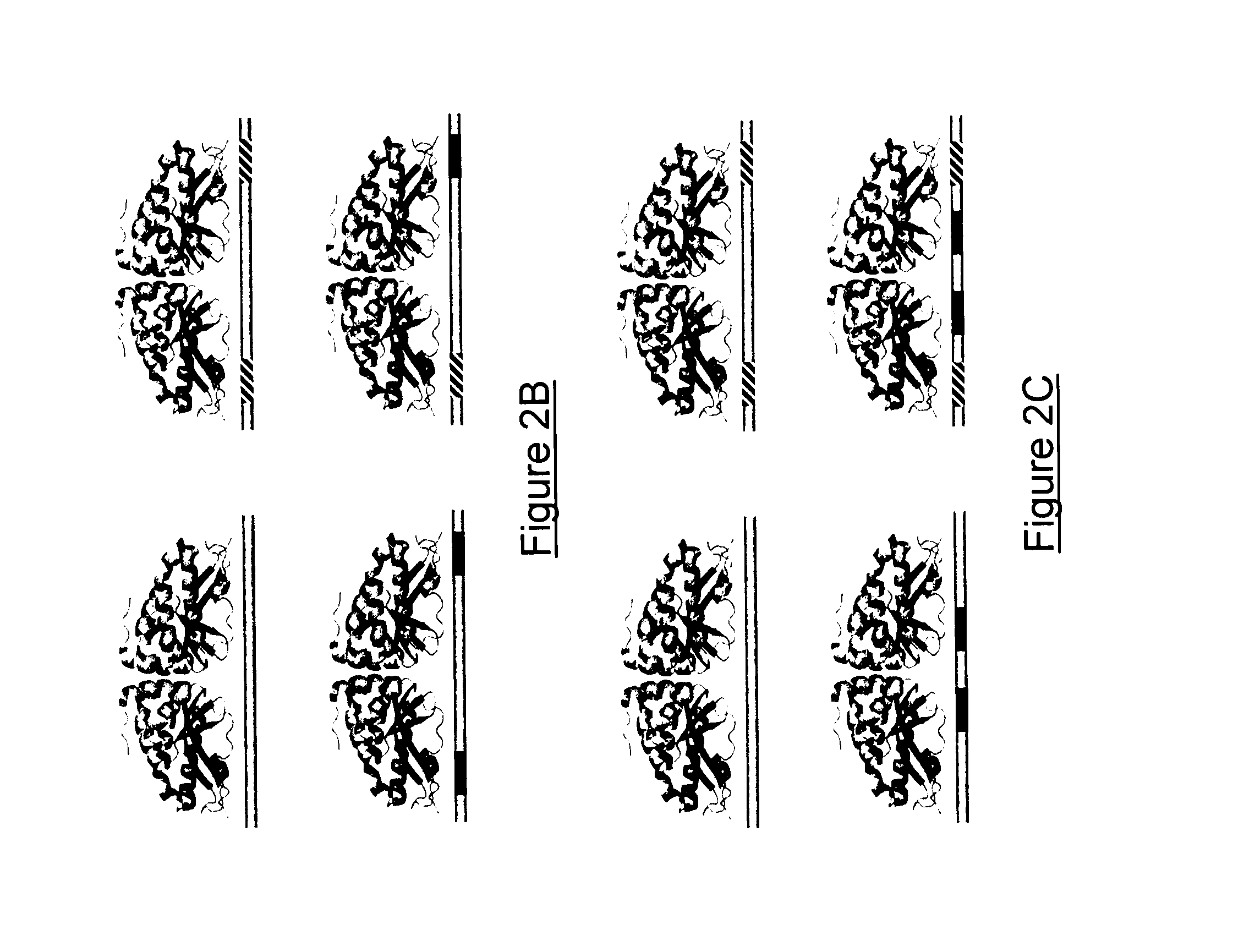Meganuclease variants cleaving a DNA target sequence from the rhodopsin gene and uses thereof
a technology of rhodopsin and target sequence, applied in the field of meganuclease variants, can solve the problems of functional protein but not fully wt allele restoration, and achieve the effect of restoring at least partially its function
- Summary
- Abstract
- Description
- Claims
- Application Information
AI Technical Summary
Benefits of technology
Problems solved by technology
Method used
Image
Examples
example 1
Engineering Meganucleases Targeting the Rho34 Locus
[0260]Rho34 is a locus comprising a 24 bp non-palindromic target (ACTTCCTCACGCTCTACGTCACCG also referred to as Rho34.1 target=SEQ ID NO: 8) that is present in the first exon of RHO gene (reference sequence NC000003.11 as described in 10062009 database update; start by 259-282, downstream of the ATG).
[0261]It can thus be used for several strategies:[0262]inactivation of the gene (dominant negative pathologic allele) by NHEJ induced mutagenesis in the absence of repair matrix.[0263]gene correction or gene modification (cell line engineering at Rho34 locus with reporter genes for example) in the presence of a repair matrix.[0264]introduction of a functional cds to follow a exon KI strategy; Rho34 localization in the first exon of RHO gene makes it especially well suited to apply this strategy.
[0265]I-CreI heterodimers able to cleave target sequence Rho 34.1 (SEQ ID NO: 8) were identified using methods derived from those described in Ch...
example 1.1
Identification of Meganucleases Cleaving Rho34
[0266]I-CreI variants potentially cleaving the Rho34.1 target sequence in heterodimeric form were constructed by genetic engineering. Pairs of such variants were then co-expressed in yeast. Upon co-expression, one obtains three molecular species, namely two homodimers and one heterodimer. It was then determined whether the heterodimers were capable of cutting Rho34.1 target sequence SEQ ID NO: 8.
[0267]a) Construction of Variants of the I-CreI Meganuclease Cleaving Palindromic Sequences Derived from the Rho34.1 Target Sequence
[0268]The Rho34 sequence is partially a combination of the 10TTC_P (SEQ ID NO: 4), 5CAC_P (SEQ ID NO: 6), 10GTG_P (SEQ ID NO: 5) and 5GTA_P (SEQ ID NO: 7) target sequences which are shown on FIG. 3. These sequences are cleaved by mega-nucleases obtained as described in International PCT applications WO 2006 / 097784 and WO 2006 / 097853, Arnould et al. (J. Mol. Biol., 2006, 355, 443-458) and Smith et al. (Nucleic Acids R...
example 1.2
Validation of Rho34 Target Cleavage in an Extrachromosomal Model in CHO Cells by Covalent Assembly of Heterodimers as Single Chain and Improvement of Meganucleases Cleaving Rho34
[0281]I-CreI variants able to efficiently cleave the Rho34 target in yeast when forming heterodimers are described hereabove in example 1.1. In order to further assess the cleavage activity for the Rho34 target in CHO cells, synthetic single chain molecules based on several pairs of mutants identified in Yeast have been assayed using an extrachromosomal assay in CHO cells. The screen in CHO cells is a single-strand annealing (SSA) based assay where cleavage of the target by the meganucleases induces homologous recombination and expression of a LagoZ reporter gene (a derivative of the bacterial lacZ gene).
[0282]The M1×MA Rho34 heterodimer gives high cleavage activity in yeast. Rho34.5-MA is a Rho34.5 cutter that bears the following mutations in comparison with the I-CreI wild type sequence: 32T 33C 38H 44V 54...
PUM
| Property | Measurement | Unit |
|---|---|---|
| MW | aaaaa | aaaaa |
| mutational heterogeneity | aaaaa | aaaaa |
| structures | aaaaa | aaaaa |
Abstract
Description
Claims
Application Information
 Login to View More
Login to View More - R&D
- Intellectual Property
- Life Sciences
- Materials
- Tech Scout
- Unparalleled Data Quality
- Higher Quality Content
- 60% Fewer Hallucinations
Browse by: Latest US Patents, China's latest patents, Technical Efficacy Thesaurus, Application Domain, Technology Topic, Popular Technical Reports.
© 2025 PatSnap. All rights reserved.Legal|Privacy policy|Modern Slavery Act Transparency Statement|Sitemap|About US| Contact US: help@patsnap.com



